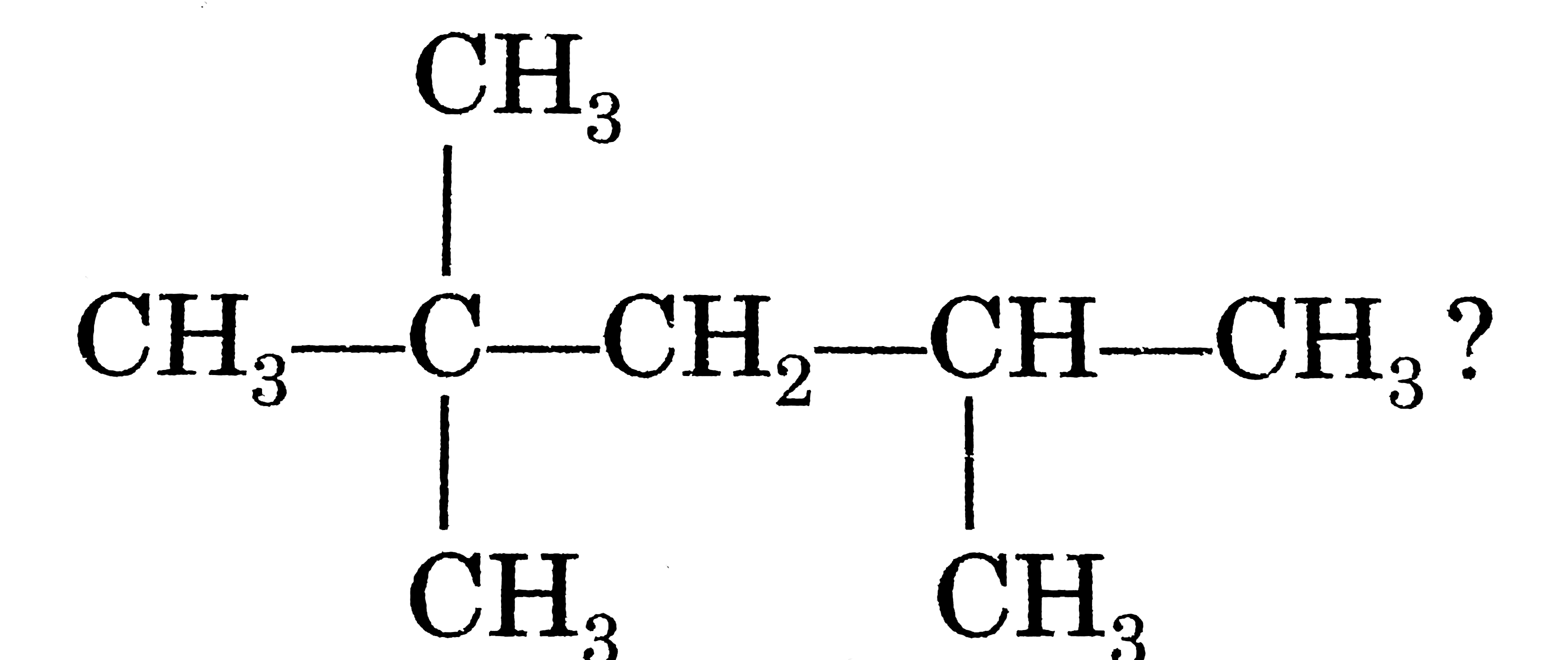How many monochloro deriwative will be of C4H10 (only structural )
To determine how many monochloro derivatives can be formed from C₄H₁₀, we need to follow these steps:
Step 1: Identify the Structure of C₄H₁₀
C₄H₁₀ can represent different structural isomers. The primary isomers of butane (C₄H₁₀) are:
1. n-Butane: CH₃-CH₂-CH₂-CH₃
2. Isobutane (2-methylpropane): (CH₃)₂CH-CH₃
Step 2: Analyze Each Isomer for Monochlorination
Next, we will analyze each isomer to see how many unique monochloro derivatives can be formed.
For n-Butane:
1. n-Butane (CH₃-CH₂-CH₂-CH₃):
- Chlorination can occur at:
- The terminal carbon (C-1): Forms 1-chlorobutane
- The second carbon (C-2): Forms 2-chlorobutane
- Resulting products:
- 1-chlorobutane
- 2-chlorobutane
For Isobutane:
2. Isobutane ((CH₃)₂CH-CH₃):
- Chlorination can occur at:
- The terminal carbon (C-1): Forms 1-chloro-2-methylpropane
- The second carbon (C-2): Forms 2-chloro-2-methylpropane
- Resulting products:
- 1-chloro-2-methylpropane
- 2-chloro-2-methylpropane
Step 3: Count the Unique Monochloro Derivatives
Now, let's summarize the unique monochloro derivatives from both isomers:
1. From n-butane:
- 1-chlorobutane
- 2-chlorobutane
2. From isobutane:
- 1-chloro-2-methylpropane
- 2-chloro-2-methylpropane
Final Count
In total, we have:
- 1-chlorobutane
- 2-chlorobutane
- 1-chloro-2-methylpropane
- 2-chloro-2-methylpropane
Thus, the total number of unique monochloro derivatives of C₄H₁₀ is 4.
---
C₄H₁₀ can represent different structural isomers. The primary isomers of butane (C₄H₁₀) are:
1. n-Butane: CH₃-CH₂-CH₂-CH₃
2. Isobutane (2-methylpropane): (CH₃)₂CH-CH₃
Next, we will analyze each isomer to see how many unique monochloro derivatives can be formed.
1. n-Butane (CH₃-CH₂-CH₂-CH₃):
- Chlorination can occur at:
- The terminal carbon (C-1): Forms 1-chlorobutane
- The second carbon (C-2): Forms 2-chlorobutane
- Resulting products:
- 1-chlorobutane
- 2-chlorobutane
2. Isobutane ((CH₃)₂CH-CH₃):
- Chlorination can occur at:
- The terminal carbon (C-1): Forms 1-chloro-2-methylpropane
- The second carbon (C-2): Forms 2-chloro-2-methylpropane
- Resulting products:
- 1-chloro-2-methylpropane
- 2-chloro-2-methylpropane
Now, let's summarize the unique monochloro derivatives from both isomers:
1. From n-butane:
- 1-chlorobutane
- 2-chlorobutane
- 1-chloro-2-methylpropane
- 2-chloro-2-methylpropane
In total, we have:
- 1-chlorobutane
- 2-chlorobutane
- 1-chloro-2-methylpropane
- 2-chloro-2-methylpropane
Topper's Solved these Questions
- ISOMERISMBook:MOTIONChapter:ISOMERISMExercise:Exercise 1
Explore 51 Videos
- ISOMERISMBook:MOTIONChapter:ISOMERISMExercise:Exercise 2
Explore 50 Videos
- IONIC EQUILIBRUIMBook:MOTIONChapter:IONIC EQUILIBRUIMExercise:Exercise -4 (Level -II)
Explore 14 Videos
- LIQUID SOLUTIONBook:MOTIONChapter:LIQUID SOLUTIONExercise:EXERCISE-4 (Level-II) PREVIOUS YEAR JEE ADVANCED
Explore 19 Videos
Similar Questions
Knowledge Check
The number of monochloro derivatives of isohexane is ( Only structural isomers )
A3B4C5D6How many 1∘ amines are possible with molecular formula C4H11N (only structural isomers)
A3B4C5D6How many amines are possible with the molecular formula C4H11N (structural isomers only) :-
A6B7C8D9
How many monochloro derivatives are possible for pentane?
View SolutionHow many structural isomer are possible for C_(4)H_(10)O (only alcohol).
View SolutionHow many 1∘,2∘ and 3∘ amine are possible for c3H13N? (Only structural )
View SolutionHow many primany , secondary and tertiary alcohol are possible for C5H12O ? Only structural
View SolutionFor molecular formula C4H9NO how may amide will be there which will not form H --bon ? (only structural )
View Solution
